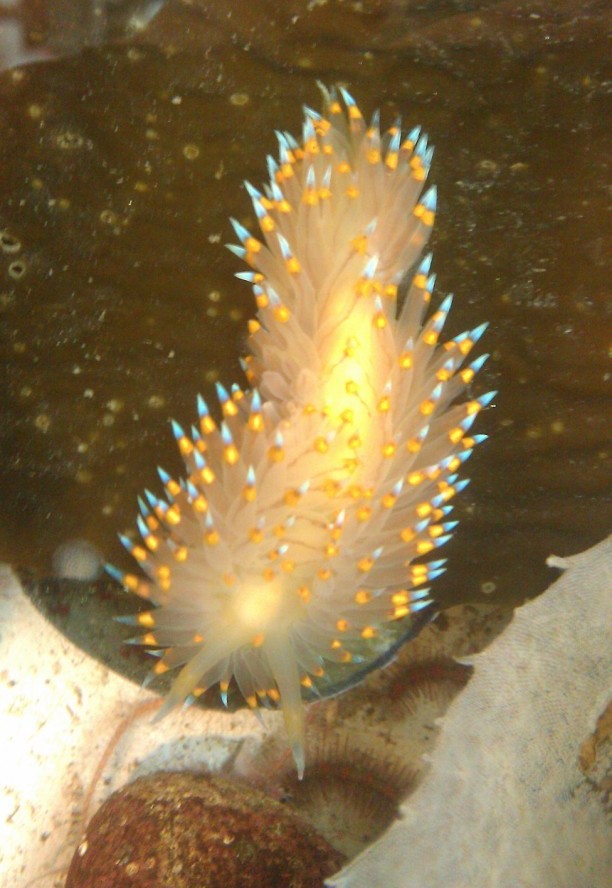
Santa Barbara nudibranch
Beauty comes in all shapes and sizes and that’s true for the ocean too.
Some of the most stunning creatures are nudibranchs, which are commonly referred to as sea slugs or naked snails because they are a type of mollusc without a shell. According to the book Eastern Pacific Nudibranchs: A Guide to the Opisthobranchs from Alaska to Central America, nudibranchs are also called the flamboyant butterflies of the sea, which comes closest to capturing their natural essence.
Nudibranchs feature stunning colors and patterns similar to butterflies, but the comparison doesn’t end there because their size is actually quite similar to the average length of a caterpillar. Flipping through the guide book almost all the sizes are listed in terms of millimeters; nudibranchs are a gift of miniature splendor.
This photo features a Santa Barbara nudibranch or Janolus barbarensis (it’s named after Santa Barbara, not from Santa Barbara). It was found on some kelp by staff at Cabrillo Marine Aquarium during a daily plankton tow.
And while nudibranchs are shaped like slugs, this nudibranch did not move like a slug. It glided across the kelp flowing gracefully with the movement of the water while the little horn-shaped structures on its back waved back and forth effortlessly.
Those little horn-shaped parts are called cerata and the colors vary between species. The Santa Barbara nudibranch has cerata with orange bands and light blue tips on the end, a combination that created a mesmerizing effect. Cerata are part of a nudibranch’s respiration system and a ceras (the singular spelling of cerata) can be cast off to distract or fool predators, a process called autotomy that’s also used by legless lizards. Nudibranchs easily regenerate cerata in just a few days, assuming the strategy worked and the predator was tricked.
Could nudibranchs be my new favorite animal? Well, let’s just say there’s a very strong possibility that there will be more posts about nudibranchs soon.
Hooray or nudibranches, and for OWT for letting everybody know about another exotic creature that we all deserve to know about!
Oops. I meant hooray “for” nudibranches!
Beautiful little sea creature. Isn’t the oceans marvelous. How can we not care and protect our planet?